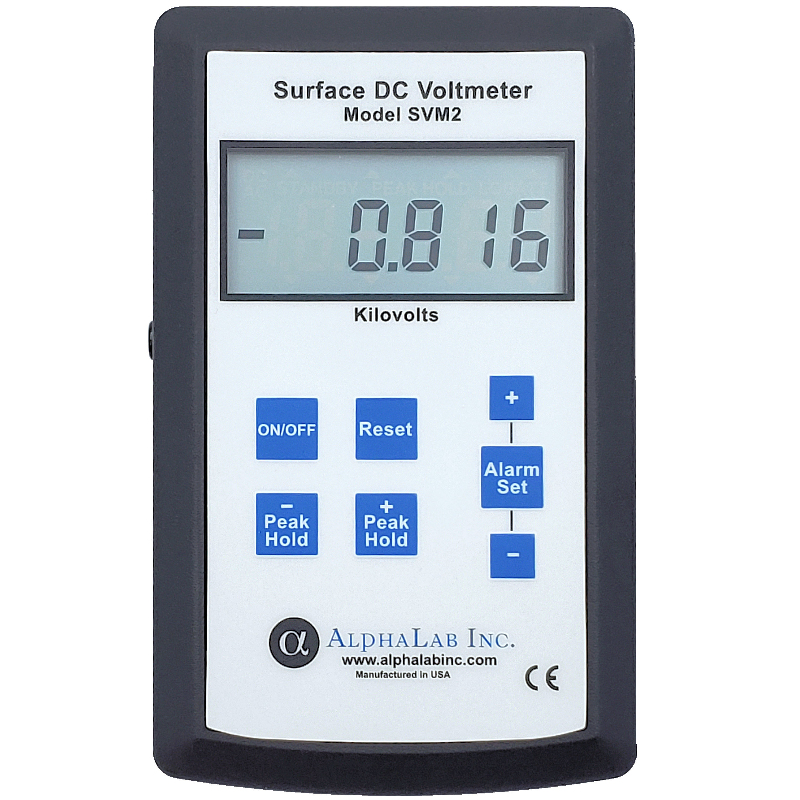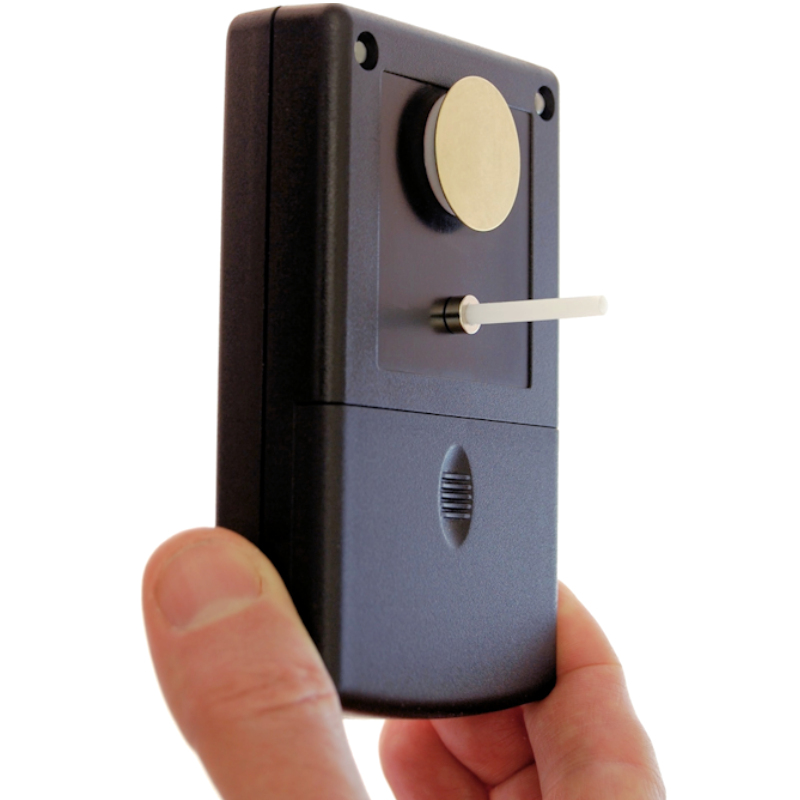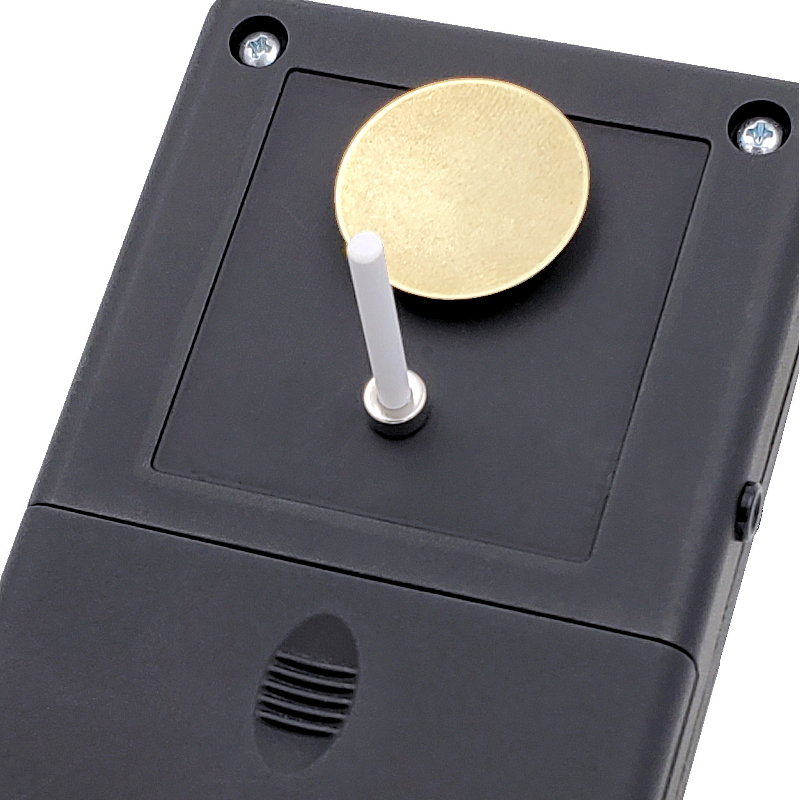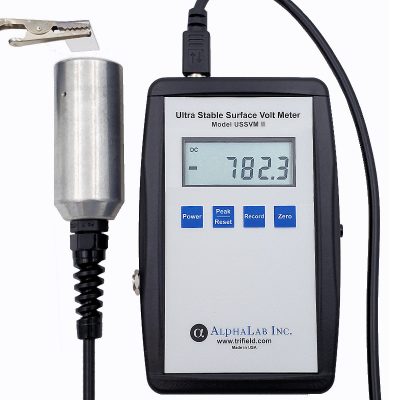Description
With this meter, all of the following can be measured:
- The amount of charge (or voltage) on surfaces and the effectiveness of antistatic processing. Measuring a tiny fractional change in the surface voltage is useful because it tells you whether the problem is getting better or worse as a new remedy is tried and modified.
- The location, strength and polarity of all static sources. Because of the speed of this meter, unexpected sources are easily found.
- The number (per square cm per second) of air ions that are hitting a surface, and the effectiveness of ionizers and discharge devices.
- DC Electric field strength in air (also AC, which is 1/3 of the difference between + and – peak hold numbers).
- The approximate conductivity or ohms per square of surfaces.
- The approximate attractive/repulsive force between charged surfaces. (This can be calculated from the readings.)
- Voltage differential through the thickness of an insulating sheet or film.
NIST traceable calibration certificate included
| SPECIFICATIONS: Surface DC Volt Meter Model SVM2 | |
|---|---|
| Range at 1”: | 0 to ±29.999 kV (29000 Volts) |
| Resolution at 1″: | 0.001 kV (1 Volt) |
| Accuracy: | ±2% of reading |
| Capacitance (to ground) of Sensor: | 3 nF |
| Sensitivity if used to sense charge: | 3.3 kV/nC |
| Drift: | < 0.001 kV/ 10 seconds |
| Leakage Half Life: | > 10 hours |
| Alarm Range: | .010 kV – 20 kV / mute |
| High-Voltage Alarm: | Sounds Automatically > 20 kV |
| Sample Speed: | 0.0005 sec. > 98% response for > 0.015 sec. pulse |
| Auto Off: | If no buttons are pressed in 10 minutes |
| Environmental: | -1 °C to 43 °C (30°F to 110°F) 0-85% RH |
| Size: | 4.5 X 3 X 1.2 inches; 115 X 72 X 30 mm |
| Weight: | 160 g; 5.5 oz |
| Battery: | 9 Volt Alkaline (~30 hour life) / “Low Battery” indicator |
Full details on how to perform these measurements.
This meter is not recommended for long-term automated measurements, such as connection to a data acquisition system. Note that the included output jack is an analog voltage that is 1/10000 of the actual voltage at 25 mm distance. It represents the true waveform including DC and transients (such as AC). The output is intended to be plugged into a multimeter, oscilloscope, or ADC system. This meter should be manually reset at least every 20 minutes in case the sensor had acquired any charge, and at very strong ion levels (if a lot of sparking is present), external ions will add enough charge that the reset must be done more frequently. (For a stable electrostatic voltmeter which is chopper stabilized [“field mill”], so it can be used for long-term automated measurements without ever needing to be reset, use the Ultra Stable Surface DC Volt Meter USSVM2.)





